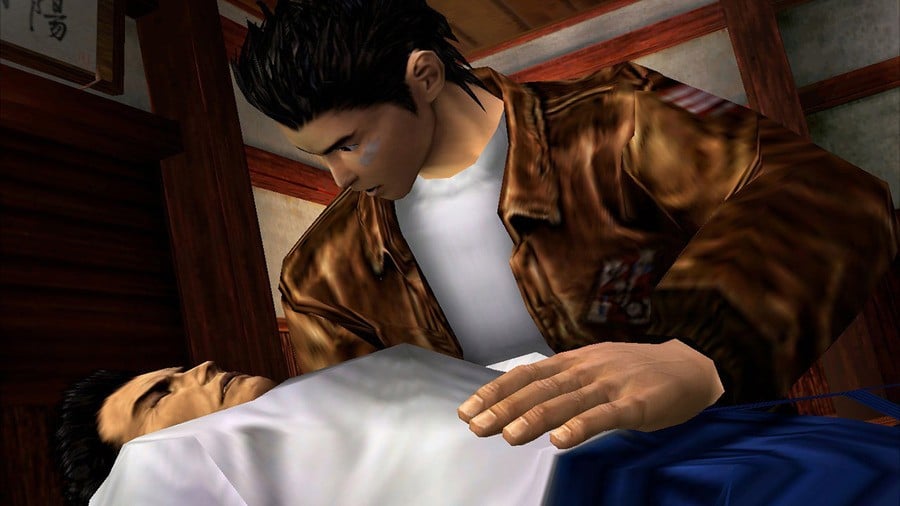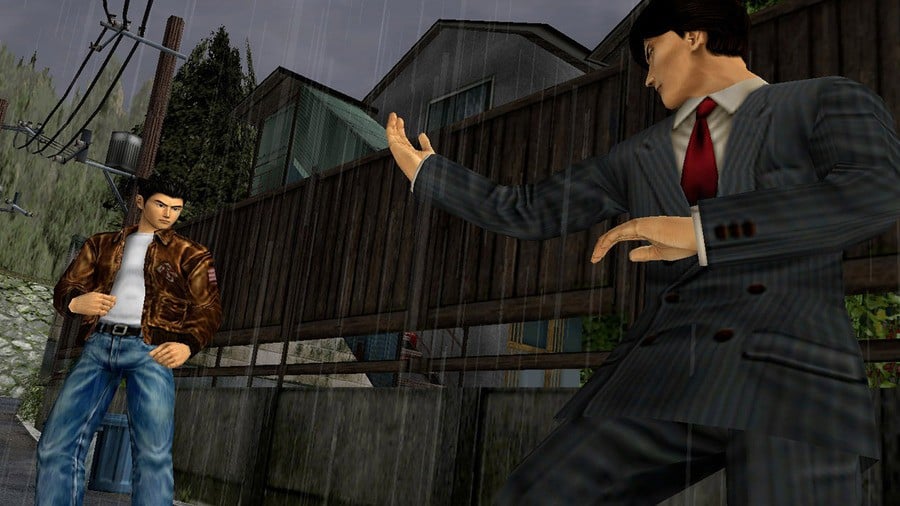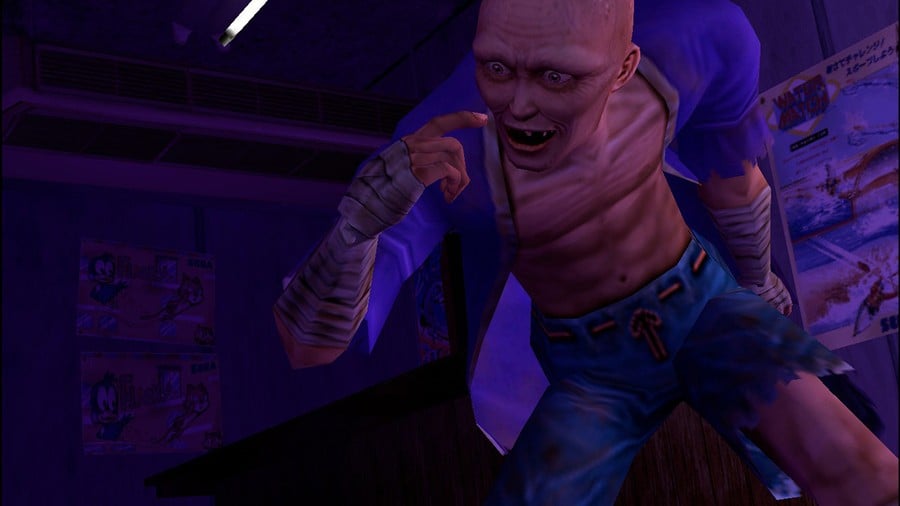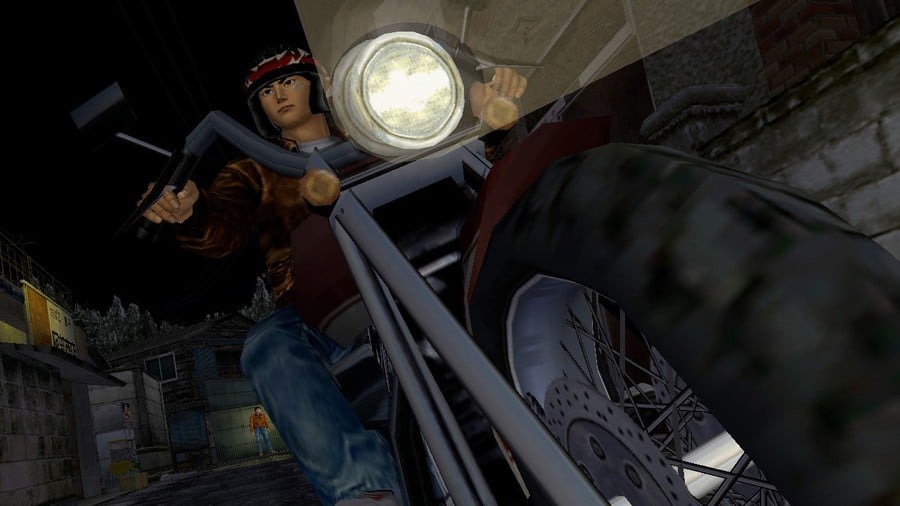Even in 2018, there’s something unusual about Shenmue. While most games strive to create lush, idyllic fantasy worlds, mid-80s Yokosuka is a claustrophobic dive, inhabited by everyday people living uninspiring lives. It’s this slice of life format that’s made the series a mainstay in gaming culture for almost two decades now, despite the original Dreamcast releases being commercial failures relative to expectations, and the series going on indefinite hiatus up until Yu Suzuki’s shock Kickstarter announcement at E3 a few years ago. Shenmue I & II, restored but not necessarily remastered for the PlayStation 4, will give a new generation the opportunity to experience Ryo Hazuki’s revenge mission anew – but is the conversion up to scratch, and do these classics hold up to modern scrutiny?
Late review code means that we’ve only really had the opportunity to properly revisit the first instalment so far, but developer d3t’s efforts appear to be consistent across both versions. Among the improvements to the originals is the addition of a new high resolution rendering option, which improves the image quality for modern televisions, while cleaning up ugly graphical artefacts like jagged edges. Widescreen support has also been implemented, though you can opt for the original 4:3 ratio if you prefer. In all cases, you can toggle the settings in-game, so you’re never forced to choose how you’d like the titles to be displayed. This luxury extends to the voice options as well, with Japanese and English dialogue included as an option in both games for the first time.

It’s in the acting department that Shenmue arguably best demonstrates its age: the games were renowned for their dreadful scripts and performances even when they were new, but in an age where seasoned Hollywood actors are stepping into the voice booth, Yokosuka’s cast of colourful characters are flabbergasting to say the least. There is, unquestionably, a comedic charm to the way in which the lines are written and delivered, and if you grew up on the series, then you’ll appreciate it from a nostalgic point of view. Even newcomers, approaching with the right context, may not be too deterred – but it’s rough, and if you’re playing without headphones, be prepared for some funny looks from family members and friends.
The actual voice acting itself is the least of Shenmue’s worries, though, because the quality of the audio is also awful. It would appear that SEGA could only get its hands on the compressed sound files, which means that every line of dialogue is accompanied by a harsh buzzing sound, as well as intense sibilance. It’s something you become accustomed to the more that you play, but it’s a shame that higher quality recordings couldn’t be sourced. Fortunately, the superb soundtrack has made the transition in better condition, and sounds just as wonderful today as it always did. There is an issue with some sound effects not triggering properly, but we’re honestly not sure whether that was a bug present in the original, or something that will need to be patched specifically for this port.

In the case of the first game specifically, the developer’s also added a teleport option to the Hazuki Residence, which reduces the need for backtracking. This is a feature that can also be toggled off, and to be perfectly honest, we recommend you do because it’s easy to miss out on some optional scenes and quests if you decide to take advantage of it. None of the other quality of life improvements from Shenmue II, such as the ability to skip time, have been added into the original, so you’re still going to find yourself wandering around, waiting for events to occur.
But the glacial pacing was always a part of the franchise’s unique charm, and as was the case in the early 2000s, it’s something that newcomers are going to find they either love or despise. The first hours of the inaugural instalment are spent doing very little indeed; you’ll be jogging around Dobuita, talking to shopkeepers in search of clues about a mysterious man named Lan Di, who violently kills Ryo’s father at the very beginning of the game. Very little happens, frankly, and while the breadcrumbs keep the story progressing, it’s all designed to embed you into its grounded world.

Yu Suzuki dubbed the genre FREE: full reactive eyes entertainment. Today we’d probably refer to it as open world, although there’s something specifically unique about Shenmue in that it encompasses elements of PC adventure games: objects can be picked up and examined, drawers can be opened and investigated, and paintings can be taken off walls. Most impressive of all is that all of the title’s NPCs go about their business independently: they open their shops at different times of the day, head out for lunch when the pangs of hunger take them, and close up as evening approaches. In an age of Bethesda RPGs and Grand Theft Auto V it’s perhaps not the jaw-dropping technical accomplishment it was back then, but even now it makes for an immersive backdrop that draws you in.
Make no mistake, though, Shenmue is an inconsistent game, and while its successor is much better paced, it’s still very much an acquired taste. There are moments in the first game where you literally have to kill in-game time, and while the world is populated with arcades to attend and parking lots to train in, the reality is that you’ll be setting down your controller and waiting for real world minutes to tick by until you can continue with your journey. It’s bizarre, but the game’s unflinching commitment to the mundane is something that we can get behind; there’s one “side-quest” where you’re tasked with buying a waiter a soft drink from a vending machine, and the pair pass the time of day by chatting about how busy the restaurant’s been – it’s that kind of game.

As far as we can tell, zero work’s been put into upgrading the textures and geometry, so it looks like a Dreamcast game. The character models can be downright frightening at times, but the artstyle holds up, and there is a beauty to the scale of the world – even if it’s as dingy as we described at the start of this article. It runs nicely, though, and the loading times are lightning fast now that there are no GD-ROMs for the Dreamcast to grind. Even though there have been minor efforts to modernise the control scheme, though – the original famously had you control Ryo with the d-pad – it still feels cumbersome to get about, especially in tight spaces.
All in all, it’s surreal revisiting Shenmue on modern hardware – truly surreal. We’ve been utterly enamoured with what we’ve played so far, but we still need time to determine how much nostalgia is playing a part. The games are very playable, and the no frills ports seem sturdily assembled – but if you’re from a generation that didn’t experience these games in their original guise, it’s difficult to determine whether you’ll jive with them. They were divisive back in the day, and without context, the issues will only be accentuated in 2018. Maybe you should play some? Yes, no – we can’t quite make up our mind. One thing’s for sure, if you’re a lifetime fan then you’re going to get a kick out of replaying these.
Will you be playing Shenmue I & II for the first time? Are you a veteran of the franchise that can't wait to revisit these? Search for sailors in the comments section below.





Comments 35
Happy to answer any questions, just copy me in!
@get2sammyb Should i play both before play part 3 ? is it worth buying ? i never play both on Dreamcast system. is there black bar in part 2 ?
@get2sammyb how's the framerate on these ports? I'd imagine they could hold an unwaivering 60FPS given the low polygon counts.
@PS4fan Those are quite broad questions. If you're planning to get Shenmue 3 then definitely play the first two. What do you mean by "black bar"?
I’ll be honest, in a world with remasters and remakes the likes of Uncharted, Crash Bandicoot and Yakuza, I’m struggling to see any hook to play shenmue.
@get2sammyb @get2sammyb two black bars on top and bottom between screen
GAME texted me earlier to say that my copy will be available to pick up tomorrow.
The only problem with that is that I cannot remember any circumstances in which I would've furnished them with my mobile number... like, ever.
Anyway, can't wait to grab it and hear other folks' thoughts!
@KratosMD You can control with the analogue stick in this version. That's one of the improvements.
@LaNooch1978 The voices in the Japanese mix sound like they were recorded in a shower. Haha.
@get2sammyb So they didn't implement a skip time function or other ways to improve Quality of Life, I take it?
I've never played Shenmue, so my copy will arrive tomorrow.
I understand the games are definitely dated, but I have no problem with that. Hell, I was playing Bomberman Heroes again a few months ago and was having a blast, even with it's somewhat delayed controls.
Do what's right Sammy and give it a perfect score in your review.
Heard that there's a day 1 patch to do with the audio, whether it fixes all the issues of not I'm not sure. Hopefully my copy will arrive tomorrow, been waiting for an awful long time to play these on a PlayStation so it'll be a big tick in my gaming lifebox.
@get2sammyb So is the shower singing good or bad? (How is the Japanese voice acting, recording quality aside.)
@get2sammyb are the arcade games still playable. That was my favorite part of the Dreamcast game.
Better play it subbed this time, because I've been raving about this game to my wife for years. If she'd finally see it for the first time with the English dub, she'll probably just burst out in laughter. Oh fuku-san, simple minded fuku-san 😂
@waluigifan1 Yes!
Do you guys know where i can find some sailors?
@get2sammyb One of my favorite ever games, I still have all 8 Dreamcast discs without scratches, and they scratched quite easily.
Glad to hear it runs well, so wont be walking through treacle in the Golden Quarter.
May I ask, are the arcade games accessible outside of the main game, from the main menu?
Shenmue 2 lets you play them from a separate disc on Dreamcast.
@Ristar24 In Shenmue 2 they are, yes. Not in Shenmue 1.
@get2sammyb That's fine, Shenmue 2 collects OutRun into the mix, be nice to play from the main menu.
Kind of wish Yakuza 0 and 6 had that option. Certainly be buying this collection, thanks!
I played Silent Hill 1 and FFVII a few years back, loved it, so i figure I could give Shenmue a go as well.
Never played these when they were originally released as I didn't have a Dreamcast. I'm certainly curious to try the remasters given the place Shenmue has in gaming history. Honestly not bothered by dated visuals or even sound.
Spoilers? It's a disgraceful shame that any company creates media/art and doesn't bother to keep the original work, now we're stuck with crap audio.
Looks like it's time to learn how to drive a forklift again. Work all day in an office them come home and have to work in a warehouse moving boxes. I hope playing again doesn't ruin my love for these games.
My Amazon preorder should be here tomorrow, although they haven’t taken payment yet so I hope there isn’t a delay.
I’ve never played these before and I’m not likely to get a Dreamcast at any point so I’m glad they’ve kept it as close to the originals as it sounds like they have done. I play more retro games than modern games these days, so no issue with anything being regarded as dated. Looking forward to experiencing a game I never thought I would!
I loved Shenmue back in the day but I was also into the band Gay Dad at the time. I fear replaying the game will be like listening to their album again now.
nice
I’m playing the new WoW expansion meaning everything else including Shenmue will have to wait.
So many games so little time...
The audio issue was also present in the GC port of Skies of Arcadia, although not quite THIS bad. Seems like DC ports and audio problems go hand-in-hand. I can't recall if the Xbox version of Shenmue II also suffered from audio bugs. Maybe I should pop it in one day and see....
@get2sammyb so now the game is out was there a patch that fixed any issues, mine wont be here for a few days you see so i can't check myself
Kitty don't look so good.
@KratosMD The option to use the left stick is there, although I recommend playing with the D-pad anyway. Moving Ryo around with the analogue stick just wouldn't feel right to me!
When I first played Shenmue I was actually working as a forklift driver. One Sunday morning I was playing the game waiting for the pub to open.
In the game I was playing Space Harrier waiting for the bars to open so I could ask some guys about sailors.
Blew my mind at the time, lol.
(Incidentally, I wasn't going to the pub to ask about sailors in real life.)
Long time reader, first time commenter. I don’t care what anyone says - I love the English Dub in both of these with every fibre of my being. Had to get that off my chest.
Tap here to load 35 comments
Leave A Comment
Hold on there, you need to login to post a comment...